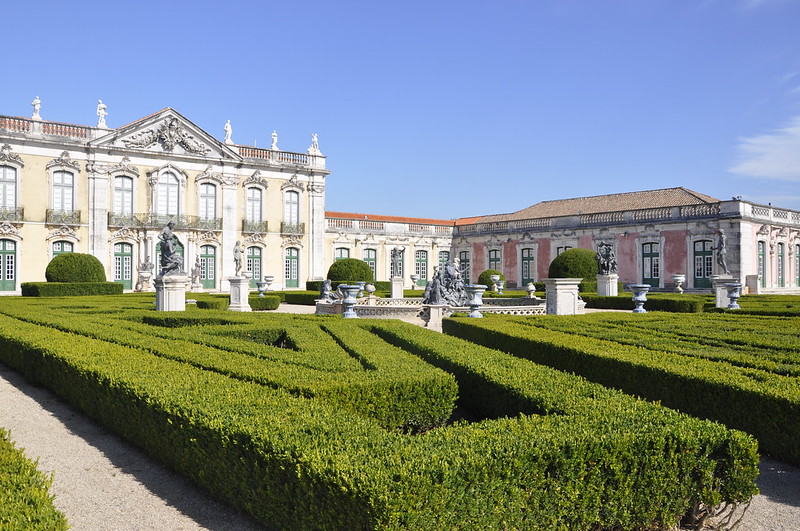
Versailles served as inspiration for many European monarchs to build palaces full of splendor and elegance. In Spain we have the Granja de San Ildefonso (Petit Versailles), Russia has the Peterhof, Austria the Schönbrunn and Portugal has Queluz Palace whose inspiration is not only seen in its refined interior but mainly by the French-style gardens.
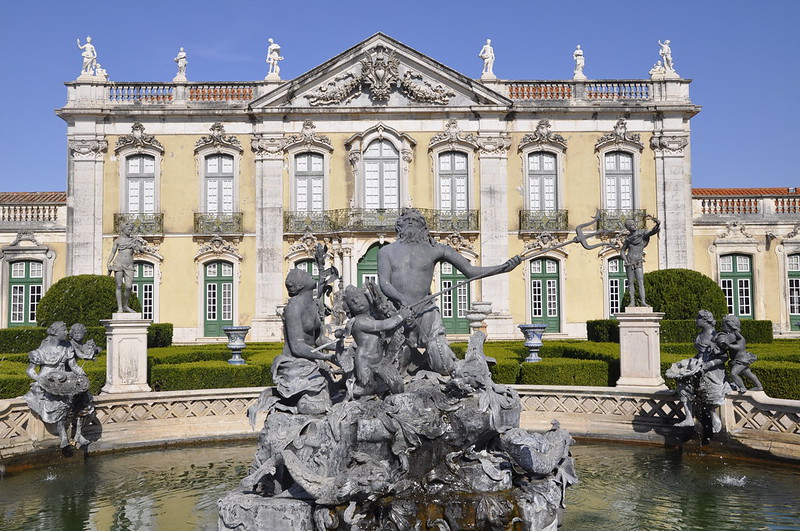
O espaço que mais faz lembrar Versailles é o Jardim de Neptuno que parte da fachada das Cerimónias. Nele estão os dois mais emblemáticos lagos do Palácio, o de Neptuno e o de Nereida. O primeiro foi criado por Jean-Baptiste Robillion e concluído em 1771. Á sua volta um conjunto de estátuas em chumbo fundido do escultor inglês John Cheere que representam as quatro estações e outras duas ligadas á mitologia grega e romana, como a de Meleager e Atalanta.
The area that is to me more reminiscent of Versailles is the Neptune's Garden that starts on the facade of Ceremonies. In it are the two most iconic lakes of the Palace, the Neptune and the Nereid. The first was created by Jean-Baptiste Robillion and completed in 1771. Around a set of statues in molten lead of John Cheere English sculptor representing the four seasons and two turned up to Greek and Roman mythology, such as Meleager and Atalanta.
The area that is to me more reminiscent of Versailles is the Neptune's Garden that starts on the facade of Ceremonies. In it are the two most iconic lakes of the Palace, the Neptune and the Nereid. The first was created by Jean-Baptiste Robillion and completed in 1771. Around a set of statues in molten lead of John Cheere English sculptor representing the four seasons and two turned up to Greek and Roman mythology, such as Meleager and Atalanta.
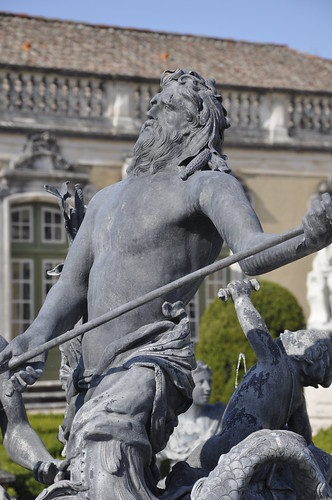
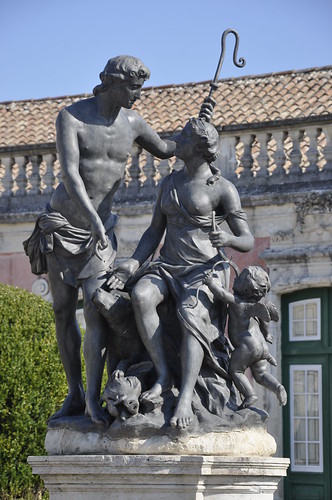
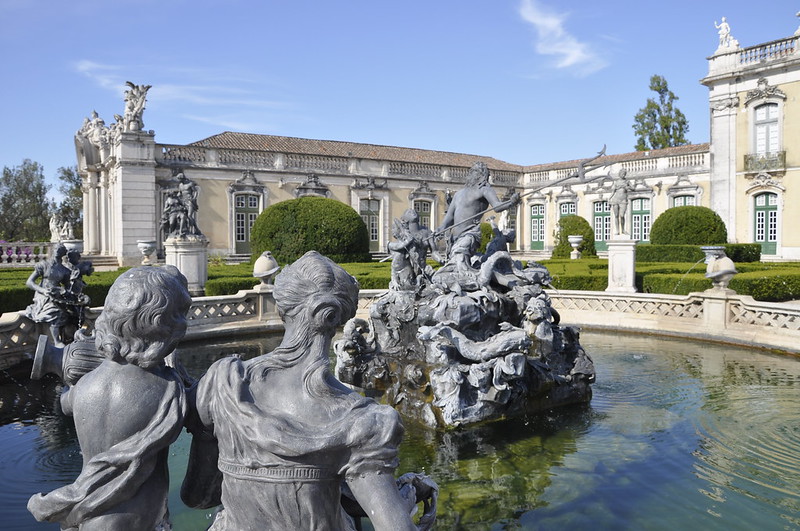
Mais afastado do edificio do Palácio está o Lago de Nereida, a ninfa do mar.
Farthest from the Palace building is the Lake Nereida, the nymph of the sea.
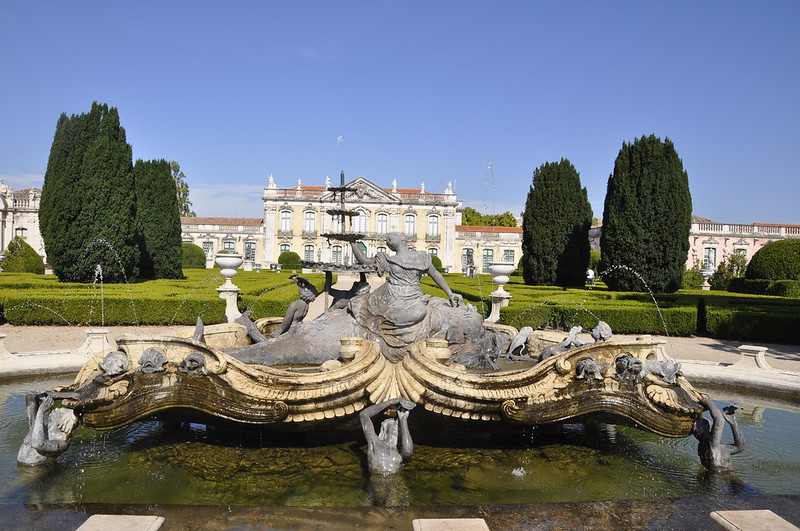
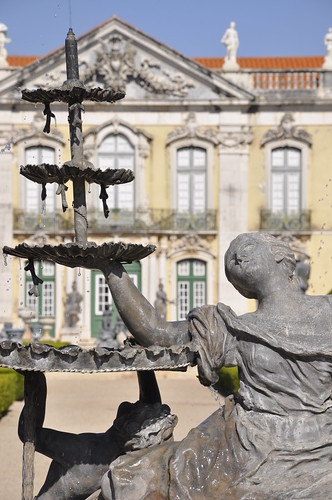
Ao lado está o Jardim de Malta, junto á fachada da Sala do Trono cujo nome está ligado ao facto de D. Pedro III ter sido Grão-Mestre da Ordem de Malta. Uma outra parte do jardim liga o Pórtico da Fama á Cascata Grande. Pelo o meio podemos encontrar zonas de grande arvoredo, pequenas fontes, a horta dos principes e o lago das conchas.
Next to it is the Malta Garden, near the the Throne Room facade whose name is linked to the fact that Pedro III was a Grand Master of the Order of Malta. Another part of the garden connects the Portico of Fame to the Great Cascade. At the middle we can find dense grove area, small fountains, the garden of princes and the lake of shells.
Next to it is the Malta Garden, near the the Throne Room facade whose name is linked to the fact that Pedro III was a Grand Master of the Order of Malta. Another part of the garden connects the Portico of Fame to the Great Cascade. At the middle we can find dense grove area, small fountains, the garden of princes and the lake of shells.
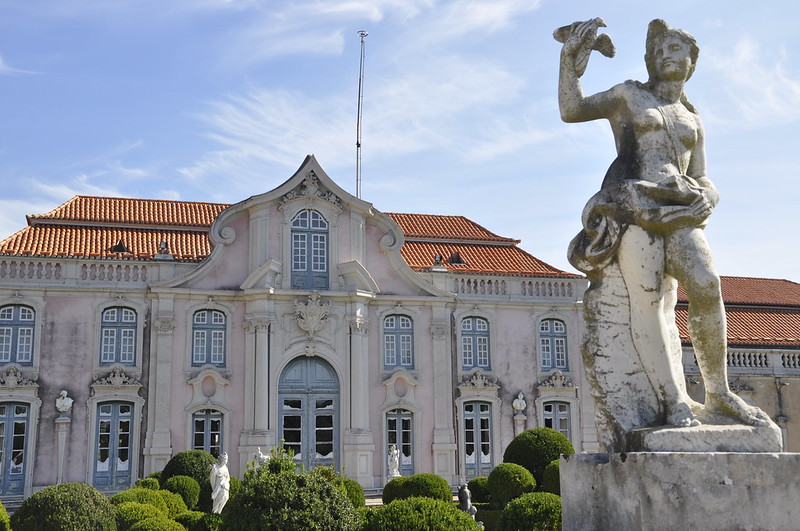
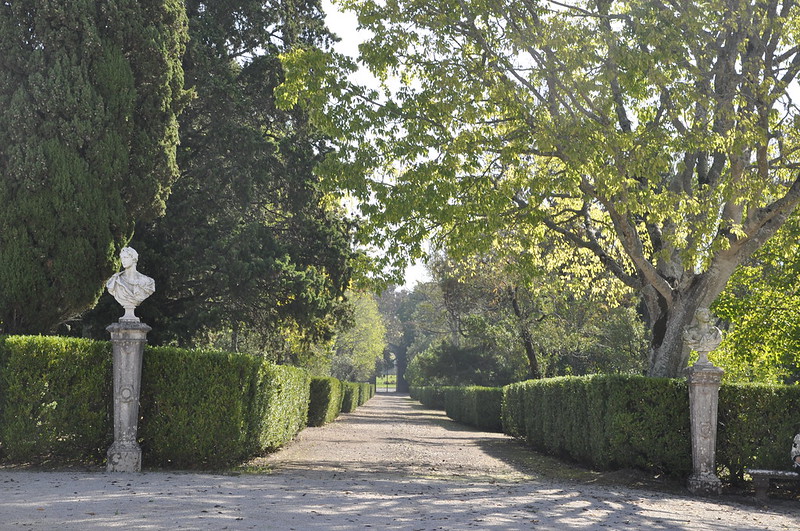
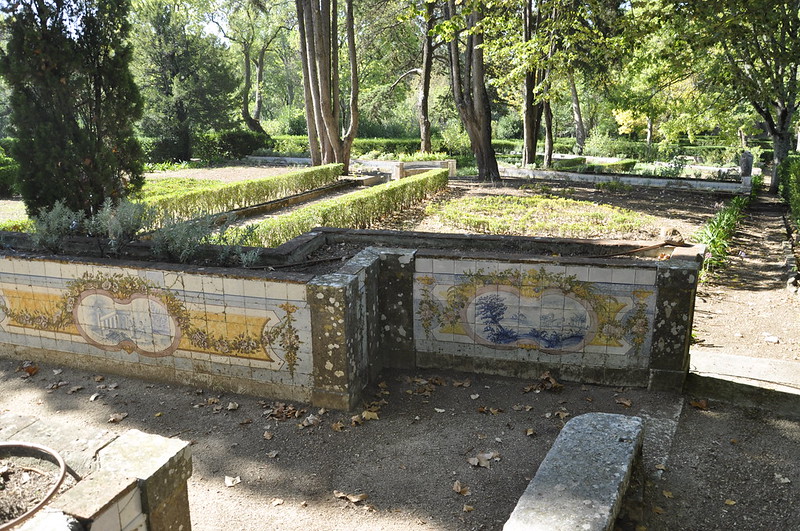
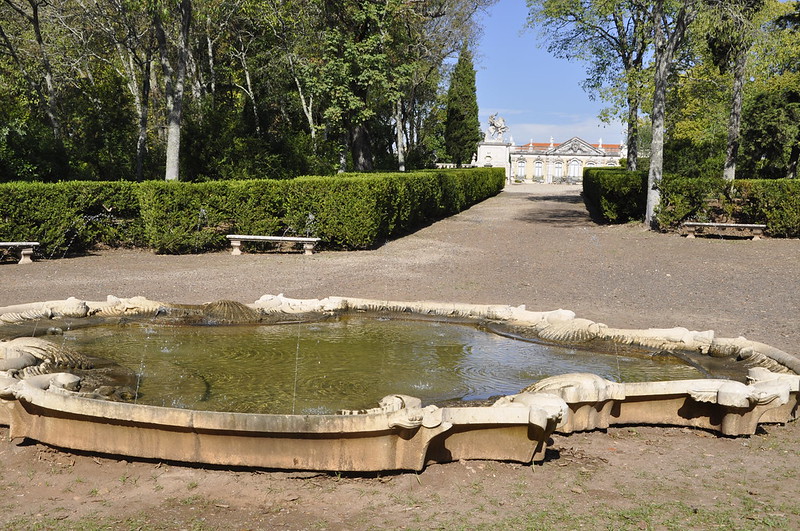
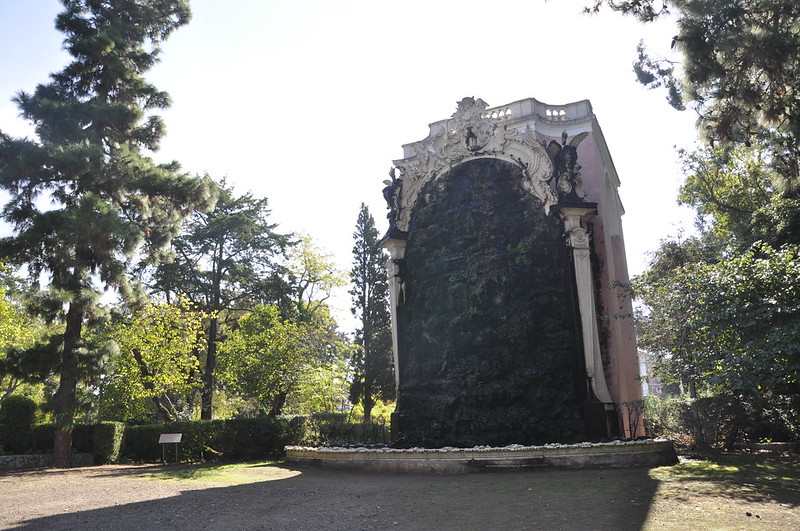
A fachada do Pavilhão Robillion é um excelente exemplar das linhas seguidas pelo arquitecto do mesmo nome, junto a ela estão pequenas esfinges muito parecidas ás que podemos ver em Versailles.
The facade of the Robillion Pavilion is an excellent example of the lines followed by the architect of the same name, next to it small sphinxes similar to the ones we can see in Versailles.
The facade of the Robillion Pavilion is an excellent example of the lines followed by the architect of the same name, next to it small sphinxes similar to the ones we can see in Versailles.
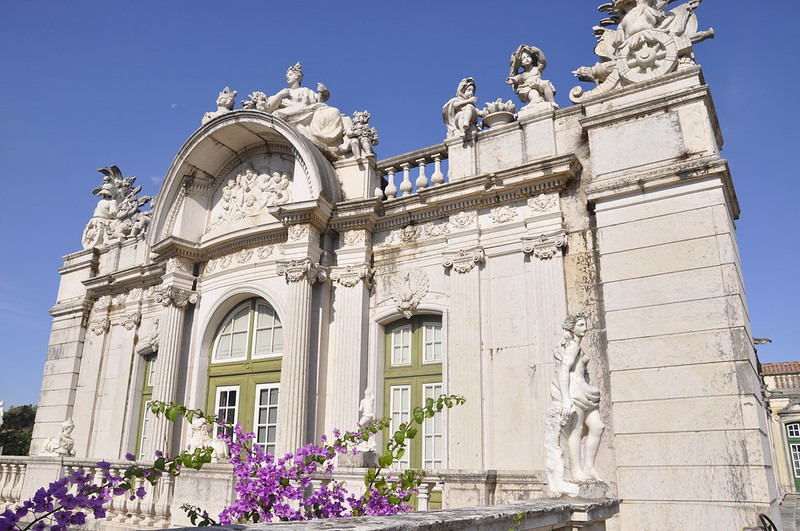
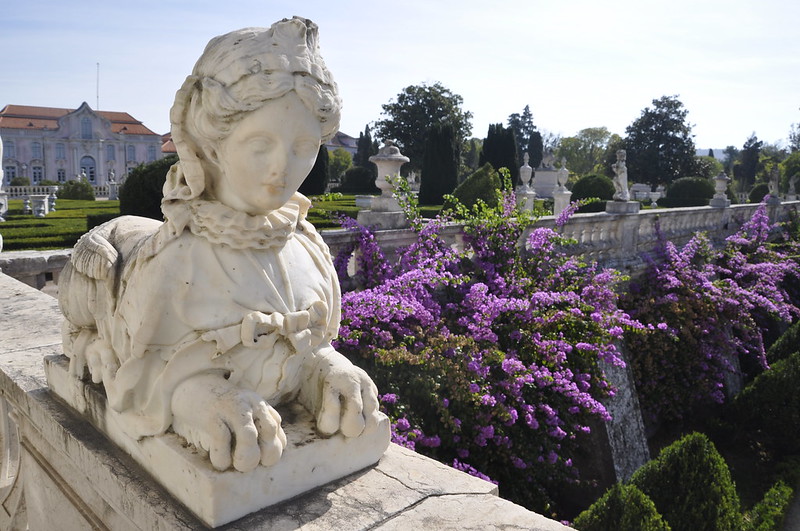
Outra das curiosidades do jardim é o Canal dos Azulejos, construído para o lazer da familia real que o utilizava para dar pequenos passeios de barco. Sobre ele estava a Casa da Música.

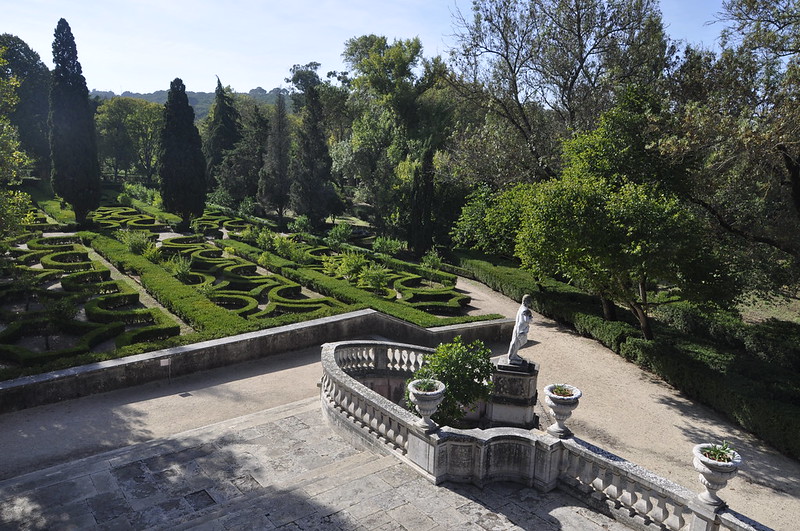
Website: https://www.parquesdesintra.pt/parques-jardins-e-monumentos/palacio-nacional-e-jardins-de-queluz/
Our guide of:


Sem comentários:
Enviar um comentário